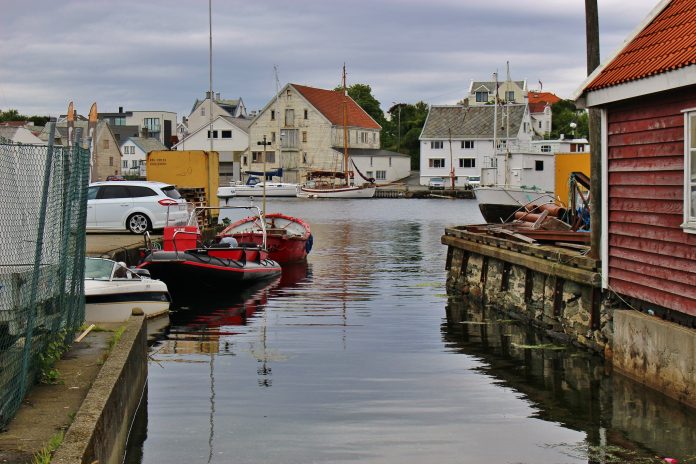Open Access Government outlines Norway’s updated Ocean Strategy, exploring the essential and ever-changing work of their Ministry of Trade, Industry, and Fisheries
Odd Emil Ingebrigtsen was appointed Minister of Fisheries and Seafood in the Norwegian Ministry of Trade, Industry and Fisheries in March 2020. In August 2020, the Minister made a speech in which he stated clearly and simply that: “Norway is a seafood nation. The ocean has always been our source of food, income and welfare.” (1) This notion has been a driving force in Norway’s work to improve the oceans and fisheries all over the country.
2020 has been an uncertain year for countries round the world, with many industries taking a serious hit. However, the Minister has recently stated that the Norwegian seafood industry has in fact, despite challenging market conditions, done well through the COVID-19 crisis. Despite this, many challenges still await, and Norway must not slow down on development and innovation. “As the world’s population is growing, we need more food, more energy, more medicines and more transportation of goods – more of everything! At the same time, the world’s oceans are under significant pressure due to climate change, overfishing and pollution. That is why we must think differently and be able to act differently. There can be no healthy fisheries without healthy oceans,” says Minister Ingebrigtsen. (2)
In 2017, the Norwegian government put the ocean high up on its political agenda by developing a national ocean strategy. As the climate itself and ocean policy is constantly evolving, this was followed up by an updated volume in 2019, which consists of a 2030 agenda and gives special priority to three areas: skills and digitalisation, climate change and green shipping, and value creation along the entire coastline. The key takeaway in this strategy is to find the right balance between protection and production.
Maritime industry
The maritime industry is currently among Norway’s most global, innovative, and forward-looking industries, it was created with the main goals of sustainable growth and value creation. To achieve this, the government laid out a number of initial plans:
- Ensure that Norway continues to be a leading maritime power with a large fleet registered in Norway.
- Stimulate green growth for the Norwegian maritime industry as well as the use of environmentally friendly technology and alternative fuel for vessels.
- Ensure an efficient and customer-oriented maritime administration and competitive ship’s registers.
- Strengthen the Norwegian maritime industry’s access to qualified personnel.
- Stimulate increased research, development, and innovation to strengthen the value creation and competitiveness of the maritime industry.
- Work for a harmonised global regulatory framework, open markets, high requirements for maritime safety, environment, and social standards.
- Develop a strong Norwegian ocean-related cluster by stimulating increased interaction between the ocean industries.
- Ensure sustainable maritime value creation in the High North while considering issues such as increased activity, safety, and the environment.
Oil and gas
Norwegian waters contain rich oil and gas resources, which have played a key role in the development of the welfare state and form the basis of a world-class oil and gas industry. The oceans are also the basis for Norway’s seafood industry, one of the largest and most sustainable in the world, and for its large maritime industry. The long coastline and the skills and innovation capacity of the coastal population are the basis for job creation throughout the country, and the updated plans pull more of a focus on to future-oriented ocean industries, education, the labour market and international cooperation and ocean diplomacy.
Low-emissions
The Government’s target is for Norway to be a low- emission society by 2050. Future priorities also include the green shipping initiative will be strengthened as a means of making progress towards the Government’s climate targets. The new LowEmission Research Centre, which will develop technology for the Norwegian continental shelf, is also in operation from 2019. Norway’s regional reform will take effect from 2020. Furthermore, national and regional strategies for business development must be coordinated so that a sound, integrated national ocean policy can be developed. This is a real focus of the updated Ocean strategy, homing in on regional work which can positively affect the local communities.
The future priorities are numerous, such as promoting sustainability and blue economy as a key area of Norway’s Arctic policy, presenting an action plan for green shipping including the ambition of halving emissions from domestic shipping and fishing vessels by 2030, managing seabed minerals, and combating marine litter, just to name a few.
Blue Justice
Some of these have already been put into action, one example being that last year, the Norwegian government also launched the program “Blue Justice”, with the goal to combat illegal fishing. “It is time for us to realise that there is a well-organised crime in the fisheries sector all over the world,” stated the Minister. (3) And today, there are 19 countries supporting this program. Furthermore, some of Norway’s leading innovations include the development of the world’s first hybrid fishing boat and the world’s first electric aquaculture support vessel.
Overall, with these measures, Norway hopes to be able to find the right balance between protection and production. “We strongly believe that the ocean-based industries will be crucial in meeting many of today’s global challenges.” (4) This commitment to the exchange of knowledge at all levels can provide great synergies both nationally and internationally.
References
1. https://www.regjeringen.no/en/aktuelt/nor-fishing-2020-digital/id2727286/
2. https://www.regjeringen.no/en/aktuelt/nor-fishing-2020-digital/id2727286/
3. https://www.regjeringen.no/en/aktuelt/nor-fishing-2020-digital/id2727286/











